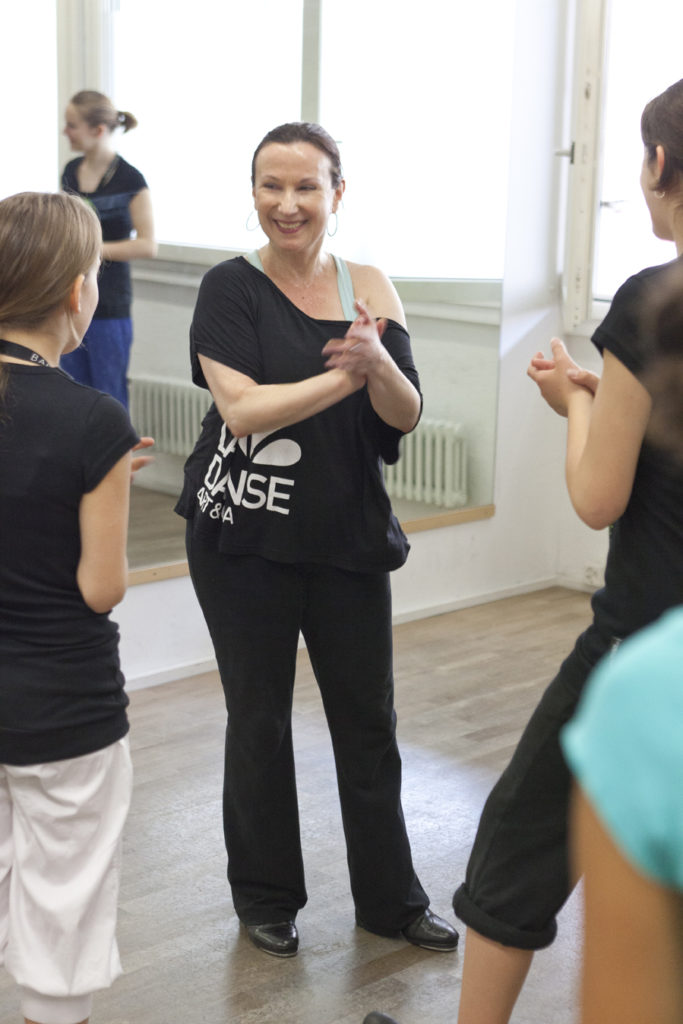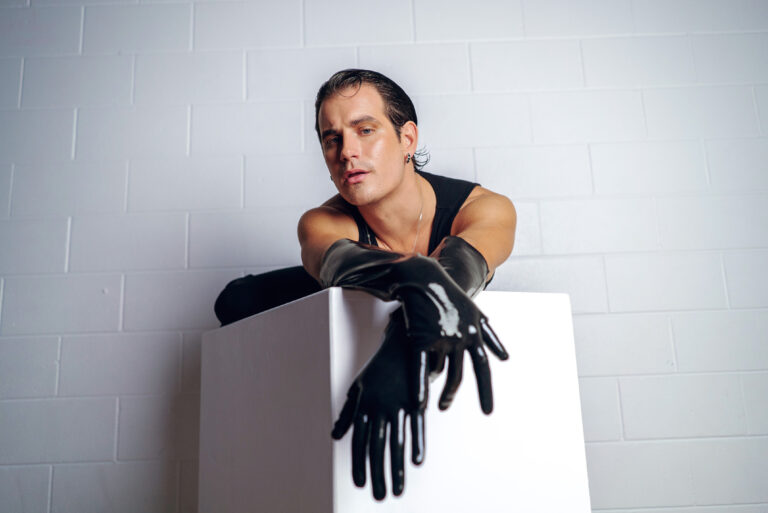
Barbara Duffy knows what it feels like to be afraid of improvisation. Early in her career, she would pre-choreograph moments that were supposed to be improvised and steps from routines she knew.
Today, Duffy is living proof that improvisation is a skill that can be taught: She’s written a book, Tap Into Improv: A Guide to Tap Dance Improvisation, and has taught her improv for tap class all over the world. She’s particularly sensitive to the fear that many dancers bring into improv environments, and swears by the tools she’s come up with “to take students’ minds off of freaking out.”
Here are Duffy’s top tips for teaching improv, geared for tap teachers but with lessons for dance teachers in any style.
Address Students’ Fears
Duffy often starts class by asking students what their biggest fear about improv is. “It’s like therapy,” she says. One common fear: making a mistake, to which Duffy responds by emphasizing the fact that her class is a space where mistakes can be made. She sometimes even has students face their fears head-on: When a student expressed that they were scared of being off the rhythm, she told them to try to be off the rhythm for the next exercise—which they had trouble doing. “A common fear for tap dancers is that they are afraid of being out of time with the music. To overcome this fear, I tell them to intentionally try to dance off time. Often, they realize it’s actually difficult to dance off time, leading them to trust their own sense of the beat and hopefully release that fear. It gives them the confidence not to worry about that so much,” she says.
Impose Limitations
When the world is their oyster, the breadth of movement that’s available to dancers can be overwhelming. Give them exercises that narrow the scope of what they can do, to make improvisation feel more manageable. One of Duffy’s favorites: Taking certain foundational steps away from students (like shuffles and brushes).

Encourage Choice-Making
Duffy emphasizes that improv isn’t just doing whatever comes to you in the moment—it requires dancers to decide what they want to say, and then say it. For this reason, “Decide what you want to say” has become one of her mantras in her improv class, encouraging her students to make distinct and intentional choices as they improvise.
Nudge Students Out of Their Comfort Zones
Duffy pays close attention to students’ habits, and then gives them exercises to help them break them. For instance, she’ll have students who tend to stay in one place move around the room continuously as they dance, or ask students who mostly play with low notes in their tap phrases to play with high ones.
Just be careful not to pass judgment on students’ habits. Duffy remembers how as a young dancer she would beat herself up for doing the same steps over and over again in her improv. When she started to think about them differently—as steps she kept doing because she loved and was good at them—and allowed herself to do them without judgment, she found that her improvisation opened up (and she relied on those steps less and less).

Be a Guide
There’s no one right way to improvise, says Duffy. “It’s not that I say to my students ‘This is how you do it,’” she says. “Because I have to believe that you have to find that for yourself. I don’t want to tell people how to improvise—I’m just a guide.”





